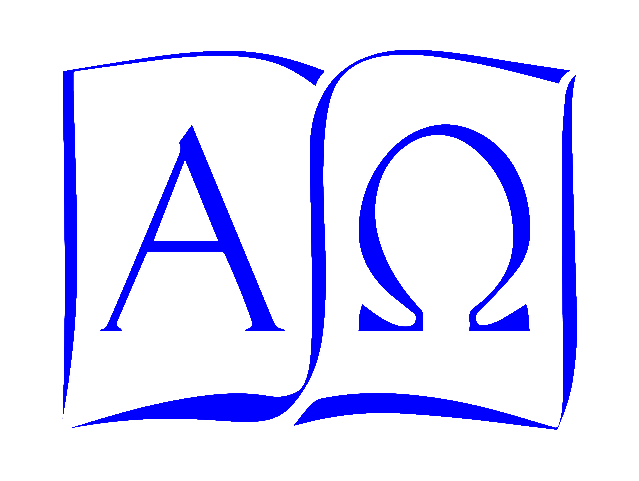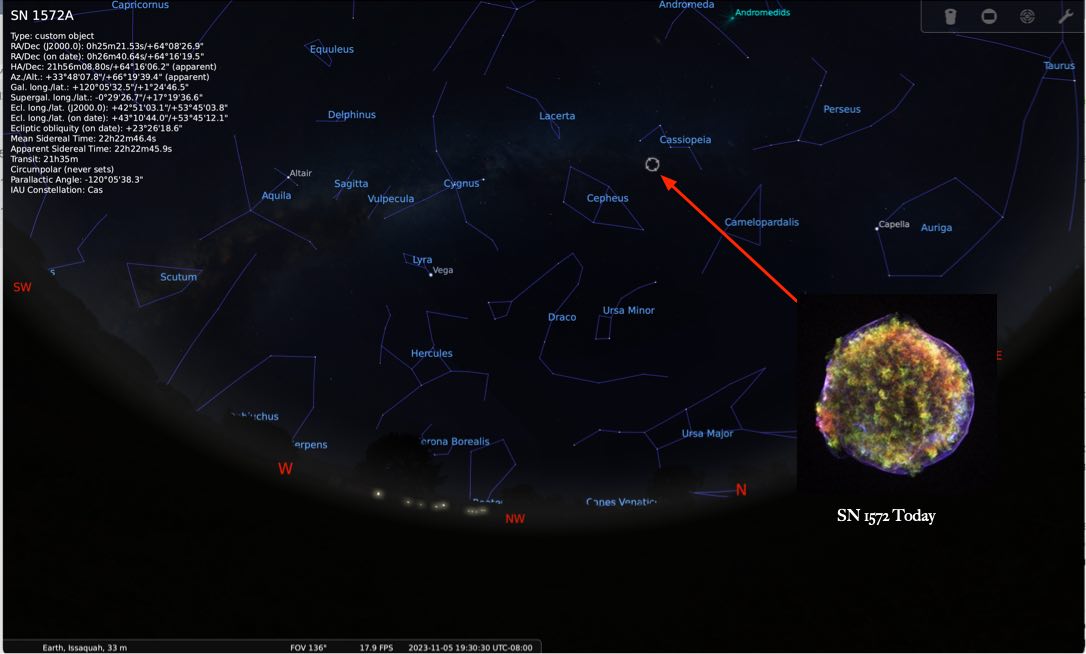Sometime between November 2 and November 11 (so traditionally the midpoint at November 6) a number of individuals recorded a “new star” in the constellation of Cassiopeia. This constellation is within 30° of the North Pole star, so that European sixteenth century observers, the new object was visible through the long November night. By November 16, it rivaled Venus, which at certain times is the brightest object in our sky, excepting only the Sun and the Moon. Then it slowly faded away.
Aristotle’s cosmology was still the dominant theory of matter and motion, including celestial motion. Matter could be divided into five elements, four of which (earth, fire, water, and air) were found on Earth, below the orbit of the Moon, and one of which, the fifth element or quintessence, was found only above the orbit of the moon, composing the crystalline spheres and the planets. The four terrestrial elements moved toward or away from the Earth’s center unless forced to move sideways; they could be mixed together in different proportions to form all the substances we observe, and they could be destroyed and regenerated. The quintessence, however, moved in uniform continuous circles around the center of the earth, ungenerated and incorruptible.
So the reports of a new star violated a fundamental rule of Aristotelian physics: nothing in the heavens could change. Early observers tried to explain the appearance of the new star as a deviation of some kind, a blot in the Earth’s atmosphere, an odd weather phenomenon. The permanence of the star, which faded slowly until it was no longer visible in the naked eye by 1574, two years after it first appeared, and its similarity in appearance otherwise to the fixed stars challenged attempts to explain it as a weather system of some kind.
In 1573, however, Tycho Brahe published an extensive work De nova et nullius aevi memoria prius visa stella, “Concerning the Star, new and never before seen in the life or memory of anyone”. Brahe gathered the observations of astronomers from Spain to Germany, and using triangulation for angles involved, was able to show that the new star could not be an atmospheric phenomenon: it had to lie beyond the circle of the moon.
By itself, the nova of 1572 was not enough to force a complete re-evaluation of Aristotle’s cosmos, but it posed a dilemma for those who were committed to an Aristotelian world view. The data from different observers in many locations made the objective evidence impossible to ignore, and the precision of calculations made the conclusion sustainable. When the Great Comet appeared five years later in 1577 (during the first week of November also), and similar observations and calculations placed it outside the orbit of the Moon, astronomers who had resisted earlier new theories, such as Copernicus’ proposal that the planets circled the Sun, had to consider the possibility that Aristotle was wrong.
Modern historians of science call this a paradigm shift, a concept developed in Thomas Kuhn’s 1962 book The Structure of Scientific Revolutions. A paradigm shift isn’t simply an expanded theory to explain a new set of observations, but a reworking of the fundamental assumptions underlying the relationships between all observations, old and new. It changes not only the theory, but how new investigations are made, and what characteristics are measured.
And it doesn’t happen just in science, or at a global level. Our own educational “aha!” moments, when a difficult concept suddenly becomes clear, is often a paradigm shift that requires us to review what we thought we knew, and look at it again from a new perspective.

